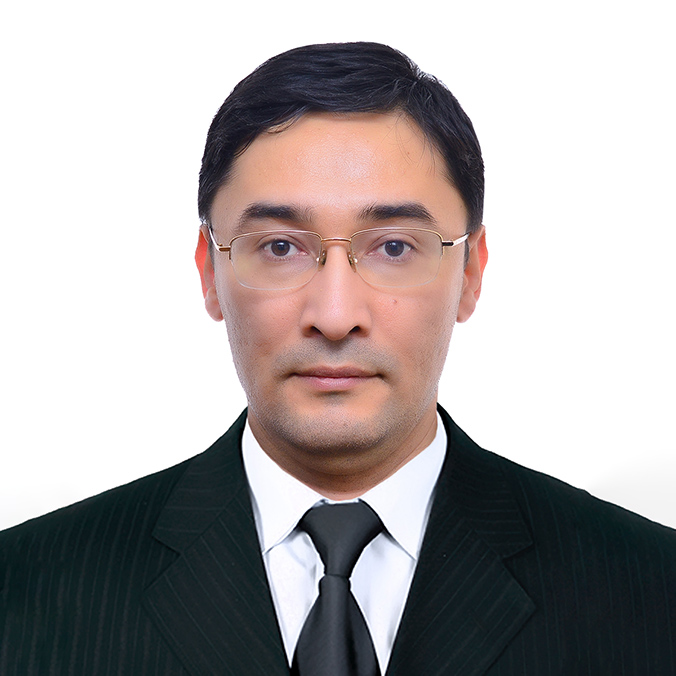
Part-time PhD student (2022-2025)
fataev@wiut.uz
Academic biography
- 1994-1996 Academic Lyceum named after S.Kh.Sirojiddinov, Tashkent, Uzbekistan, Diploma
- 1996-1998 Tashkent State University, Tashkent, Uzbekistan, Bachelor of Science in Mathematics (transferred) (“Umid” (present “Iste’dod”) Presidential Scholarship Program for Talented Youth, Grant winner, continued the Bachelor’s study in USA)
- 1998-2001 Troy State University, Troy, Alabama, USA, Bachelor of Science in Mathematics with Economics
- 2002-2004 National University of Uzbekistan, Tashkent, Uzbekistan, Master of Science in Mathematics
Employment:
- 01/2001-05/2001 Natural Science Centre at Troy State University, Troy, Alabama, USA, tutor
- 06/2001-12/2003 Institute of Mathematics AS RUz, Tashkent, Uzbekistan, Research Practitioner
- 12/2003-08/2004 Mathematics Preparatory Course at Westminster International University in Tashkent, Tashkent, Uzbekistan, Lecturer
- 02/2012-05/2012 Management Development Institute of Singapore in Tashkent (MDIST), Tashkent, Uzbekistan, Lecturer
- 10/2004-present 2022 Westminster International University in Tashkent (WIUT), Tashkent, Uzbekistan, Lecturer
Expertise:
- Differential and Integral calculus
- Statistics and Probability
- Econometrics
- Growth theory
Doctoral project
The title of the dissertation is “Total factor productivity estimation: Evidence from the Great Silk Road region”.
In 1956 and 1957 the professor Robert M. Solow at MIT published two research articles, one on a steady state growth and the other on the technical change in aggregate production function. In 1987 he was awarded the Nobel Memorial Prize in Economic Sciences for his contribution to the theory of long-term macroeconomic growth. His revolutionary articles shaped the Solow growth model. In his interview (Keegan, 2007) Professor Solow stated the motivation for his research: “10 years after the end of the war (WWII). And one of the great phenomena in the world is the fact that after a lot of post-war hassle, the European economies are beginning to grow rapidly… how to provide an explanation of the growth paths of a modern economy, and why some grow faster than others?” According to the Solow growth model, the economic growth or the change in the level of output in an economy over time results from the changes in labor, capital and technology (also known as knowledge, idea, innovation). Measuring the changes in labor and capital is traceable, but measuring the technological progress is difficult to trace. Solow (1957) considered the aggregate output function of US for the period 1909-1949 and argued that one-eighth of the total increase was traceable to increased capital per man hour, and the remaining seven-eighth to technical change. Note that Solow (1957) calls the factor A as “technical change” as a short hand expression for any kind of shift in the production function. It is this determinant that has remained “black box” for several decades. The growth in total factor productivity is known as Solow residual and much research has been done to decode and explain it: knowledge (Romer, 1986), human capital or education (Barro, 1991), innovations or patents (Aghion, 1992), research and development (Barro and Salai-Martin, 1995, Coe, 1995), national entrepreneurial ecosystem (Acs et.al, 2014) and others. In various other literatures, e.g. Sims (2018), one can see the factors such as climate, geography, institutions (stable government, the rule of law, property protection, stable social norms, etc), finance (financial system), infrastructure (roads, running water, electricity, etc), free trade and others.
Historically, there was a system of caravan routes known as the Great Silk Road that has existed for thousands of years and passed through many lands (about 50 countries today). It has been playing a pivotal role in sharing ideological and material goods, scientific ideas and technologies, cultural and religious values among Europe, Asia and Africa. The Great Silk Road was formally originated in 130BCE in China and it was not just a single route, but a number of routes that connected the East with the West. When the sea routes were opened in the 15th century, the influence of the Great Silk Road has decreased for certain period. Nevertheless, there have been several projects to revive the Great Silk Road. To state some, the United States Economic and Social Commission for Asia and the Pacific (UNESCAP) has proposed to restore a trans-Asian highway and a railway counterpart of the road. The ESCAP is one of the five regional commissions of the UN and it promotes cooperation among its 53 member states and 9 associate members in pursuit of solutions to sustainable development challenges. In 2013 Chinese government initiated a global infrastructure development strategy named “Belt and Road Initiative” (formerly known as “One Belt One Road” and “Silk Road Economic Belt”). The project aims at investing in nearly 150 countries and international organizations and building railroads, roads, bridges, seaports, airports, tunnels, dams, power stations and many more. It is believed that the project will boost the global GDP.
After the collapse of the USSR in 1991, a number of Turkic states such as Uzbekistan, Azerbaijan, Kazakhstan, Kyrgyzstan and Turkmenistan gained independence and shifted from the command economy to market economy. In 2009, four Turkic states (Azerbaijan, Kazakhstan, Kyrgyzstan and Turkey) founded the Organization of Turkic States (then called Cooperation Council of Turkic Speaking States – Turkic Council). In October 2019, Uzbekistan joined as a full member. In November 2021, Turkmenistan joined as an observer member. One of the main goals of the organization is to strengthen peace and stability, promote wide-ranging cooperation and disclose the potential for common development among its member states. Certainly, one important aspect of common development is the economic cooperation. Situated at the heart of the Great Silk Road, the Turkic states could and should promote trade and cultural ties between the East with the West.
In order to realize and estimate the potential of the restored Great Silk Road, it is necessary to analyze and understand political, economical and social conditions in the member countries. The UNESCO’s Silk Roads Programme (Silk Roads Programme, n.d.) provides essential information for 50 countries. Hence, the present research is aimed at evaluating the sources of economic growth, in particular, the technological progress in these countries. The analysis of the technological progress will be carried out with the aid of Solow’s growth model. Various econometric models will be tested to estimate the economic growth and the total factor productivity for the countries located on the ancient Great Silk Road for the period of 1991-2019. The estimation of the total factor productivity and determination of its main factors has both scientific and practical values. The current PhD thesis will contribute to the research of the field.
References:
1) Silk Roads Programme (n.d.) Retrieved on April 18, 2022, from https://en.unesco.org/silkroad/countries
2) Julio Garín, Robert Lester, and Eric Sims (2018) Intermediate Macroeconomics (textbook). 3rd edition. University of Notre Dame.
3) Zoltan J. Acs, Saul Estrin, Tomasz Mickiewicz, László Szerb (2014) The Continued Search for the Solow Residual: The Role of National Entrepreneurial Ecosystem. IZA Discussion Paper, No. 8652.
4) Brian Keegan (2007) Robert M. Solow for the MIT150 Oral History Project. Massachusetts Institute of Technology. https://infinite.mit.edu/video/robert-m-solow
5) David T. Coe and Elhanan Helpman (1995) International R&D spillovers, European Economic Review, 39, pp. 859-887.
6) Robert J. Barro and Xavier Sala-i-Martin (1995) Economic growth, McGraw-Hill, 1995, p. 539.
7) Aghion P., and Howitt, P.A. (1992) Model of growth through creative destruction. Econometrica 60, No. 2, 323-351.
8) Barro R. (1991) Economic Growth in a Cross Section of Countries, The Quarterly Journal of Economics, Vol. 106, No. 2. (May, 1991), pp. 407-443.
9) Paul M. Romer (1986) Increasing Returns and Long-Run Growth. Journal of Political Economy, Vol. 94, No. 5, pp. 1002-1037.
10) Solow, R. M. (1957) Technical Change and the Aggregate Production Function, Review of Economics and Statistics, 39(3), 312-20.
11) Solow, R. M. (1956) A contribution to the theory of economic growth, Quarterly Journal Of Economics, 70, 65-94.
Publications
- Ataev, F., Lambrou N., Djumanov, A. (2009). Mathematics and Logic Workbook, Fan va texnologiya, Tashkent, 2-edition.
- Ataev, F. (2012). Problem 11678 proposal. American Mathematical Monthly, Vol. 119, Issue 10, December 2012, p.880. Retrieved from: dx.doi.org/10.4169/amer.math.monthly.119.10.880
- Ataev, F. (2014). Formulalarni keltirib chiqarishga doir [On the derivation of formulae], Fizika, Matematika va Informatika [Physics, Mathematics and Informatics], 2014, Vol 1, pp. 46-49, Tashkent, Uzbekistan.
- Ataev, F., Lambrou N., Djumanov, A., Lambrou, M. (2015). Basic Mathematics and Logic Workbook. G‘afur-G‘ulom, Tashkent, 3-edition. ISBN: 978-9943-03-600-0
- Ataev, F. (2016, 2017, 2018). Review of Probability and Probability distributions [PowerPoint slides] Retrieved from: https://www.resakss-asia.org/uncategorized/regional-training-course-summer-school-on-applied-econometric-analysis-training-materials/
- Ataev, F. (28 Oct 2019). Review of Probability, Probability distributions and Inferential Statistics [PowerPoint slides]. Regional Training Course (Summer School) on Applied Econometric Analysis 2019, Westminster International University in Tashkent. Retrieved from: http://www.wiut.uz/index.php/component/k2/item/16-regional-training-course-summer-school-on-applied-econometric-analysis-2019
- Ataev, F. (21 May 2020). Problem 12077 (A sum involving the zeros of a polynomial) solution featured. American Mathematical Monthly, Vol 127, Issue 6, pp. 565-566. Retrieved from: https://doi.org/10.1080/00029890.2020.1747921
- Ilkhamdzhan Karimdzhanov, Nurlan Dinmukhammadiev, Dilorom Atayeva, Farrukh Ataev (6 Nov 2020). INFLUENCE OF BODY MASS INDEX OF GIRLS AND BOYS ON THE PERCENTAGE OF CD 4 CELLS WITH THE BACKGROUND OF VARIOUS ARVT REGIMENS. Journal of Critical Reviews, 7 (10), 6278-6282. doi:10.31838/jcr.07.10.544
- Alovxon Sulaymanovich Sulaymonov, Dilorom Rakhimjanovna Atayeva, Gulshan Xoldorovna Iskanova, Sayyera Shavkatovna Egamova, Akrom Alovxonovich Sulaymanov, Farrukh Rakhimjanovich Ataev (12 Nov 2020). Analysis of Osteocalcin Concentration in Polyarthritic and Systemic Juvenile Idiopatic Arthritis with Combination of Diabetes Mellitus Type 1. International Journal of Current Research and Review. (Scopus listed. Impact Factor 6.1). Vol 12, Issue 21, pp. 167-174. Retrieved from: http://dx.doi.org/10.31782/IJCRR.2020.122124
Conference participations, scientific talks
- Ataev, F. (2005). Matematikani ingliz tilida o’qitish metodikasi [On the methodology of teaching mathematics in English]. Chet el oliy o‘quv yurtlarida ta’lim olgan yosh mutaxassislarning III konferensiyasi [Conference III of young specialists who have studied in foreign universities], Tashkent, Uzbekistan.
- Ataev, F. (2006). O‘zbekiston ta’lim tizimi islohotlari [On the reforms of education system of Uzbekistan]. Chet el oliy o‘quv yurtlarida ta’lim olgan yosh mutaxassislarning IV konferensiyasi [Conference IV of young specialists who have studied in foreign universities], Tashkent, Uzbekistan. 17-18 November 2006.
- Ataev, F. (2013). O‘zbekiston yoshlarining ilmiy salohiyatini shakllantirish xususida (On the shaping of scientific potential of Uzbekistan youths). O‘zbekiston Respublikasida yoshlar siyosatini amalga oshirishning dolzarb masalalari (Topical issues of realizing the youth policy in the Republic of Uzbekistan). Conference organized by “Ministry of Higher and Secondary Special Education of the RUz”, “Iste’dod” fund, “Kamolot” Youth movement, The Academy of Sciences of the Republic of Uzbekistan, Tashkent, Uzbekistan, 22-23 January 2013. “Ma’naviyat” publishing house.





